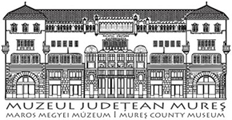Marisia - Maros Megyei Múzeum Évkönyve 25. (1996)
I. Arheologie
THE ROMAN RURAL SETTLEMENT OF CRISTE§TI ADRIAN HUSAR, NICOLETA MAN On the left bank of the Mure§ (PI. 1.1-2), at the place called „The Earth Fortress,, there are the vestiges of a large Roman rural settle" ment1, spreading on a surface of several hectares. Firstly recorded in 1870, when there are also mentioned the visible remains of a Roman road, this settlement has always called the attention of the researchers2 through a great number of discoveries. I. THE HABITATION. BUILDING SYSTEMS Although the planimetry of the Roman site of Criste§ti cannot be for the time being, satisfactorily reconstituted, the archaeological researches revealed, both the intense inhabitation3 in the civilian settlement and its organization into the Roman civilization parameters. Placed on the secondary road which was separating, at Salinae, on the imperial road, following, along the Mure§, the Räzboieni - Lunca Mure§ului - Bogata - Bräncovene§ti itinerary, the vicus of Criste§ti started its existence soon after the organization of the province. The Roman vicus does not superpose any former Dacian settlement of the Latene type4, but this does not exclude the possibility that some native settlements existed in its proximity. In the Roman settlement of Criste§ti there were discovered only surface dwellings5, having stone fundations, the walls being made of 1 TIR, L 35, p.36; D.Tudor, Ora§e, targuri §i sate In Dacia romanä, Bucure§ti, 1968, p.272-273; IDR, III/4, p.101. 2 For the history of research see A.Zrinyi, in Marisia, VII, 1977, p.91-92. After a long interruption the excavations were resumed in 1994 by Nicoleta Man and A.Husar in collaboration with Prof.D.Protase (co-ordinator). 3 I.Paulovics, Dacia keleti határvonala és az úgynevezett „däkezüstkincsek,, kérdése, Cluj, 1944, p.81-101. 4 D.Popescu, in MatArh, II, 1956, p. 115 sqq. 5 AI.Ferenczi, in ACMIT, I, 1926-1928, p.216; A.Zrinyi, op.cit., p.93.
